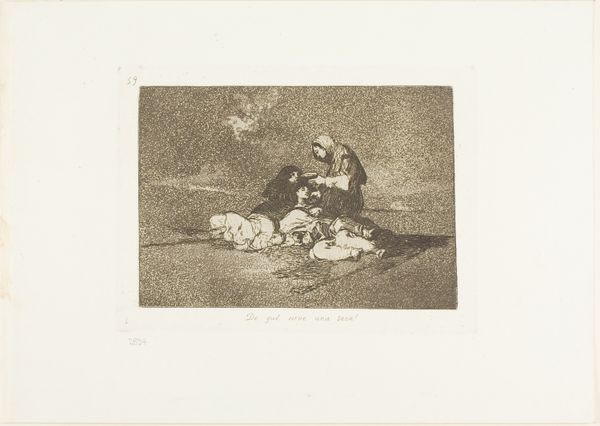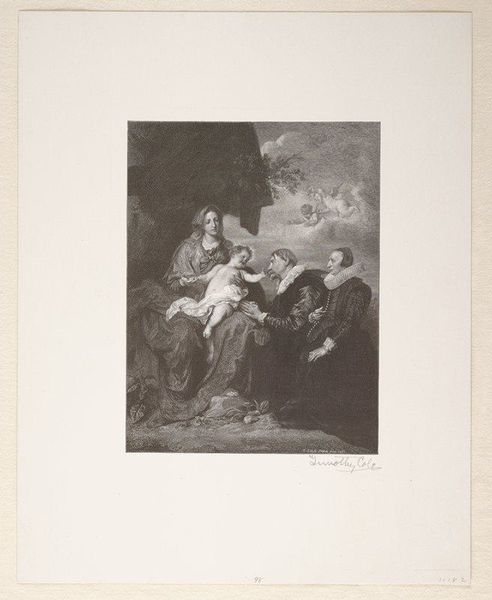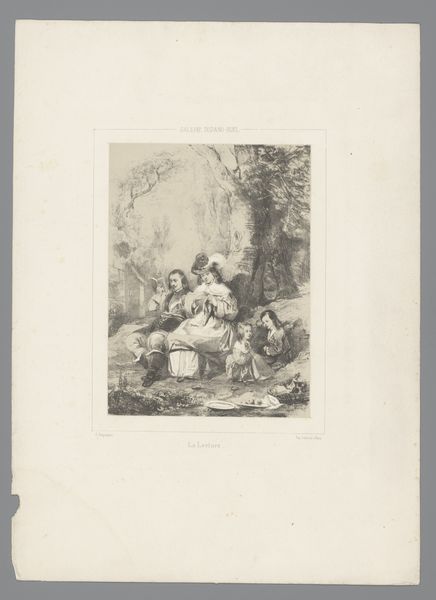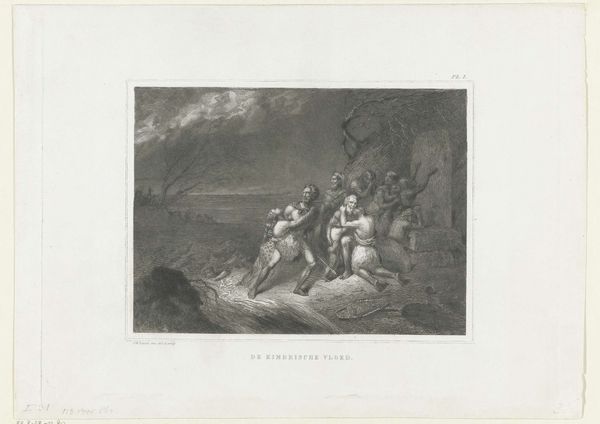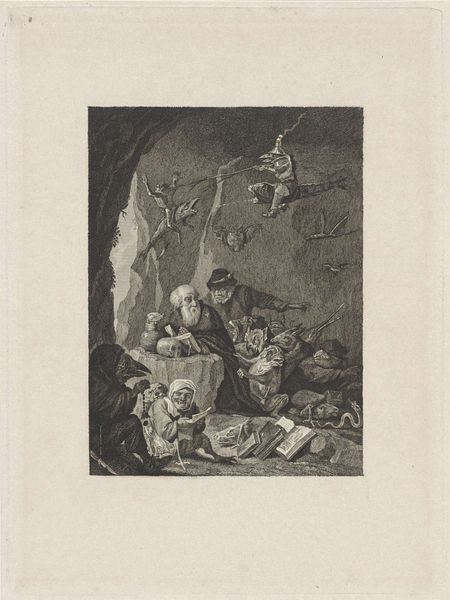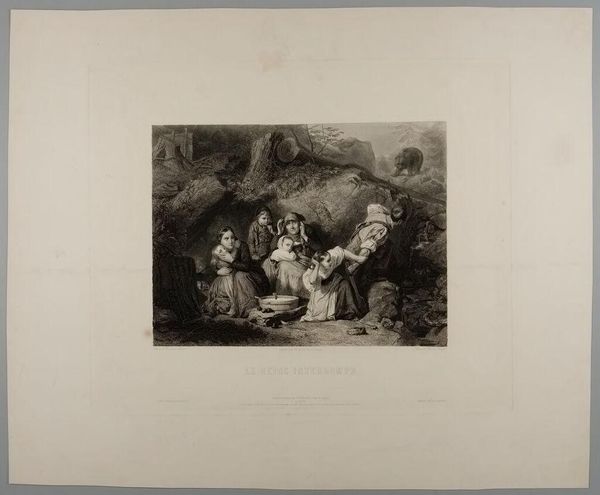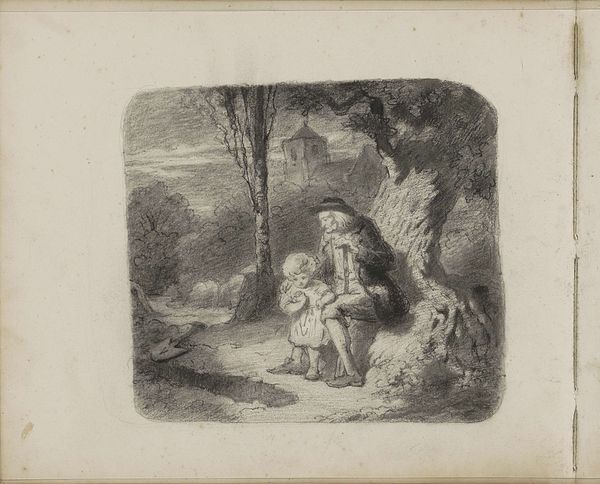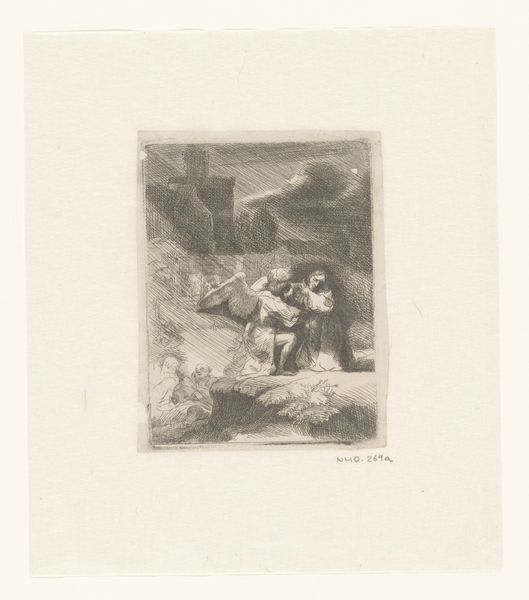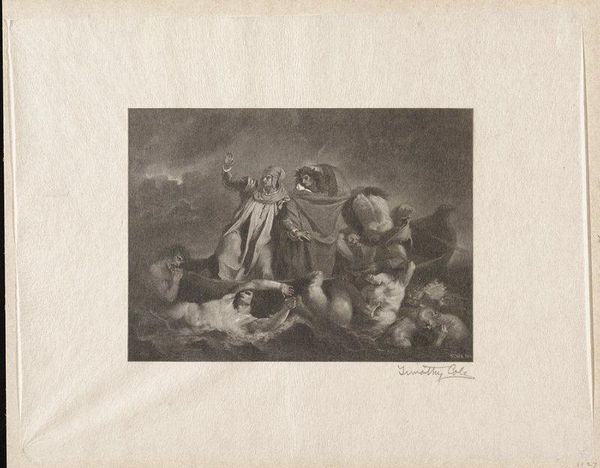
print, woodcut, wood-engraving, engraving
# print
#
landscape
#
woodcut
#
united-states
#
genre-painting
#
wood-engraving
#
engraving
Dimensions: 7 15/16 x 5 1/16 in. (20.16 x 12.86 cm) (image)11 1/8 x 8 1/8 in. (28.26 x 20.64 cm) (sheet)
Copyright: No Copyright - United States
Editor: This is "The Washerwomen," a wood engraving by Timothy Cole, dating from 1904. It's got a gentle, almost pastoral feel to it. What do you see in this piece? Curator: I see a poignant portrayal of labor and community among women at the turn of the century. The soft rendering almost romanticizes their work, yet, we must acknowledge the reality of their lives. This artwork invites us to consider the socio-economic conditions that confined many women to such arduous tasks. How might feminist theory help us unpack this imagery? Editor: I hadn’t thought about it like that. So, it's less about a pretty scene and more about recognizing the realities of their daily lives? Curator: Precisely! And how the art historical canon often omits or glosses over these lived experiences. Cole, as a male artist, is framing their labor. Whose perspective are we really seeing here? Consider also how notions of gender and class intersect to create unique forms of oppression. The labor they're doing is essential, yet largely invisible. Editor: I see what you mean. It's made me think about who gets to tell whose story. And this artwork becomes a space for questioning that. Is Cole's perspective an honest account? Or does he idealize their work, sanitizing the labor through this print? Curator: Exactly. It's crucial to engage with such images critically, questioning the narratives they construct and the power dynamics they reflect. Thinking intersectionally, it's imperative to evaluate gender, race, class and other factors, opening a critical lens to traditional approaches. Editor: This definitely offers a deeper context for looking at historical artworks! Curator: Indeed! It's about unveiling the complexities that reside beneath the surface of seemingly simple scenes.
Comments
No comments
Be the first to comment and join the conversation on the ultimate creative platform.


